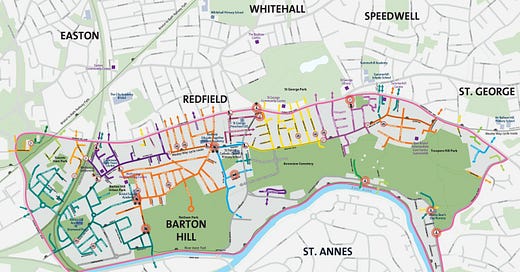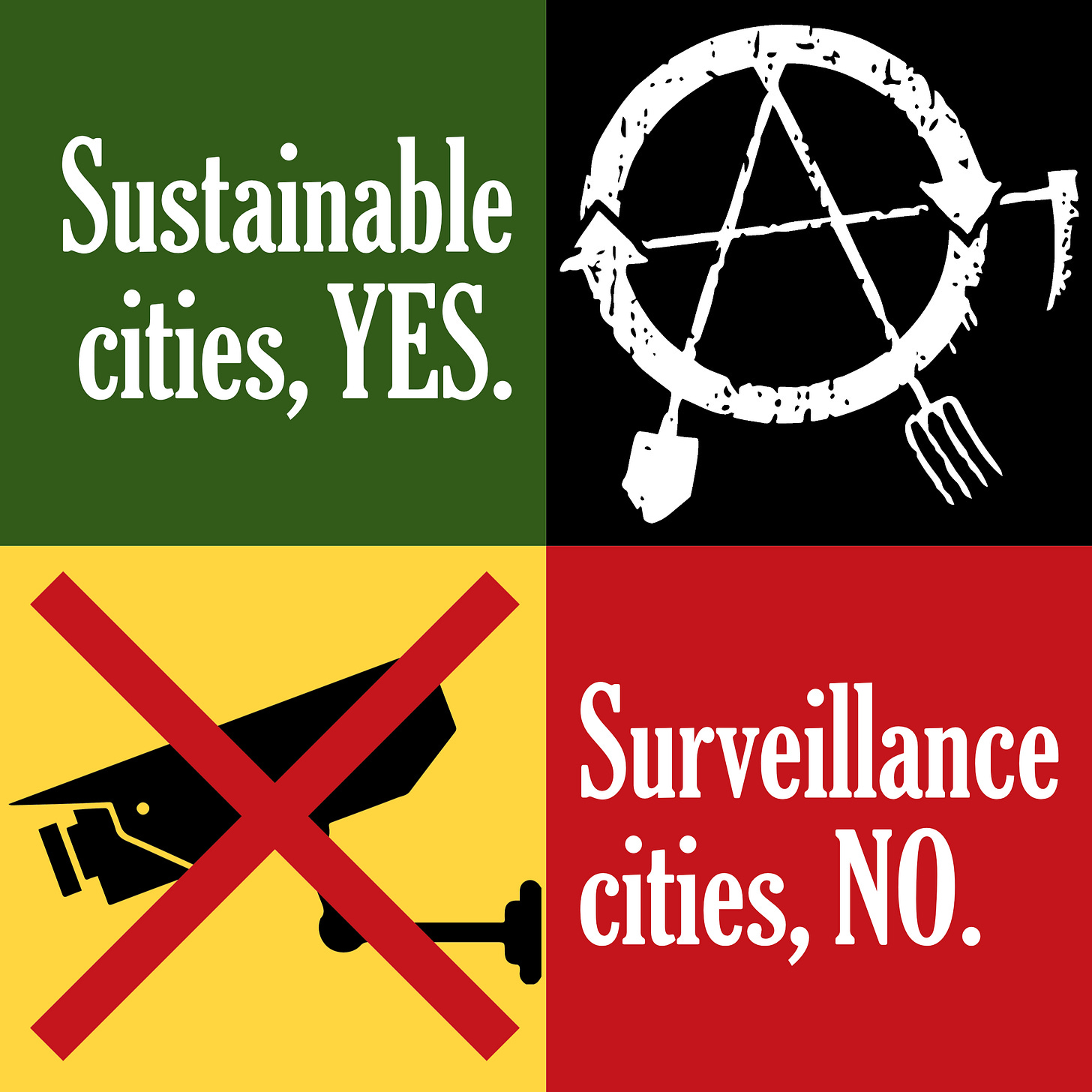The first liveable neighbourhood trial in Bristol is now set to go ahead as reported here: Bristol’s first liveable neighbourhood trial to go ahead - Martin Booth | B24/7 | 15.3.24. The trial area is in the east of Bristol and stretches from Lawrence Hill in the west all the way over to St. George in the east. From north to south it goes from the A420 (Church Road) and the A431 (Summerhill Road) down to the River Avon. It's not a neighbourhood scheme, it takes in a fair sized chunk of the east of Bristol and covers a demographically diverse area.
It's an attempt at managing traffic in residential side roads and stopping rat running by drivers wanting to avoid congestion on the A420 and A431. As we see it, one consequence is going to be an increase in traffic on those two roads. That means even more delays to an already struggling bus service. Were this liveable neighbourhood scheme being implemented in the context of an overall strategy to boost public transport around and into Bristol to entice drivers out of their cars, it could be argued that it may be a sensible move.
You don't need me to tell you that public transport in and around Bristol leave a lot to be desired. It should be pointed out that the only available public transport option across and into the east of Bristol is the bus. The railway that used to serve north east Bristol was closed in the 1960s as a result of the Beeching cuts and is now used as a cycle route. Any suggestion that the cycle path should be re-purposed for tram/light rail use will inevitably be met with howls of outrage from the cycling lobby in Bristol! This is even though it's a travel option that could potentially convey a far greater number of people than the cycle path currently does.
So we have a scheme which may well give some residents a quieter life but it will be at the expense of anyone living along Church Road and Summerhill Road who will have to experience more congestion. It will also be at the expense of bus passengers on routes using these two roads who will experience even more delays due to increased congestion. Yet drivers are being pressurised into leaving their cars at home and finding alternative transport options instead.
With increased congestion along Church Road and Summerhill Road screwing the buses and making cycling an even more uncomfortable option than it already is, we have a question for the advocates of this liveable neighbourhood scheme... Could they please detail what alternative options are drivers supposed to use? Because as far as we can see, there aren't any. All we can see is a lot of stick and no carrot.
We've written more words than we care to remember about this liveable neighbourhood. These are three of the most recent articles along with a key quote from each one:
Having to state the bleeding obvious about 'liveable neighbourhoods' 2.11.23
Yet again, I'm having to state the bleeding obvious. Unless there's a massive boost to public transport across the Bristol region and planning policy is adjusted in a way that reduces unnecessary vehicle journeys, all liveable neighbourhood schemes are going to achieve is the displacement of traffic, not its reduction. In the longer term, we need an honest conversation about how can we live and work in such a way that people are not wasting hours every day stuck behind the wheel.
Thoughts on the Liveable Neighbourhood 'consultations' in the east of Bristol 30.10.23
Looking at things in greater depth, it has to be recognised that decades of planning policy based on the assumption of near universal car ownership has resulted in our cities and towns sprawling in such a way that driving is a necessity for a lot of people. At some point, there has to be a serious discussion about how we can start to rethink the way we live and work in order to reduce that dependency. This is dealt with in some depth in the latter part of this piece: The future of movement on a finite planet 20.2.23.
How hard is for 'Liveable Neighbourhood' advocates to grasp a very simple concept? 19.7.23
Finding any answers is being made much harder by the accusations of 'conspiracy theory' that are being thrown at those expressing concerns about the impact of the proposed 'Liveable Neighbourhood' scheme. Suffice to say there are some people involved in this 'discussion' who need to take a few steps back, look at the bigger picture, realise how complex the issues are and then engage with all the voices in the debate.
There was a 'consultation' about the trial for this liveable neighbourhood. This comment about the number of people responding and how they responded from Keep Bristol Moving is very illuminating:
Although the Commonplace site does not refer to responses to the consultation, the council's report records:
1418 responses, representing a response rate of 4.4%
- 427 were expressions of support
- 760 were objections
No wonder they are not highlighting the public response.
Whatever way you read this, it's pretty clear that there's not exactly overwhelming support for this trial. Mind you, that hasn't stopped a number of liveable neighbourhood advocates from claiming that a non response to the 'consultation' was an expression of tacit support for the trial. The lengths some people go to in order to justify the implementation of their pet scheme!
The trial is going ahead so what happens during the course of this trail will be closely monitored by a lot of people, supporters and opponents alike. We'll do what we can to impartially assess the impact of the trial on the area it covers and also, neighbouring districts. We're sure it will be an interesting and illuminating exercise. It will also be a difficult one because when vested interests are involved, the 'facts' will inevitably be re-interpreted to justify their decisions. Such is life...







It's important to remember that this is, Rees made clear when he first announced the scheme, is Bristol's FIRST LTN. EBLN is to become the 'blueprint' for schemes across the city.
This is in line with everything I've read and heard about such schemes in Bristol and elsewhere, that the idea is to 'persuade' people to give up driving altogether.
I have long wanted to move to Bristol but I am shelving the plan because I can't imagine living in a city where you just can't get about. That means a greatly reduced social, cultural and community life for all, as well as the obvious economic hits. I note that Bristol has been dropped from the Times list of 'best places to live'.
Thanks for including the numbers for and against. It confirms a lot of people's assumptions.